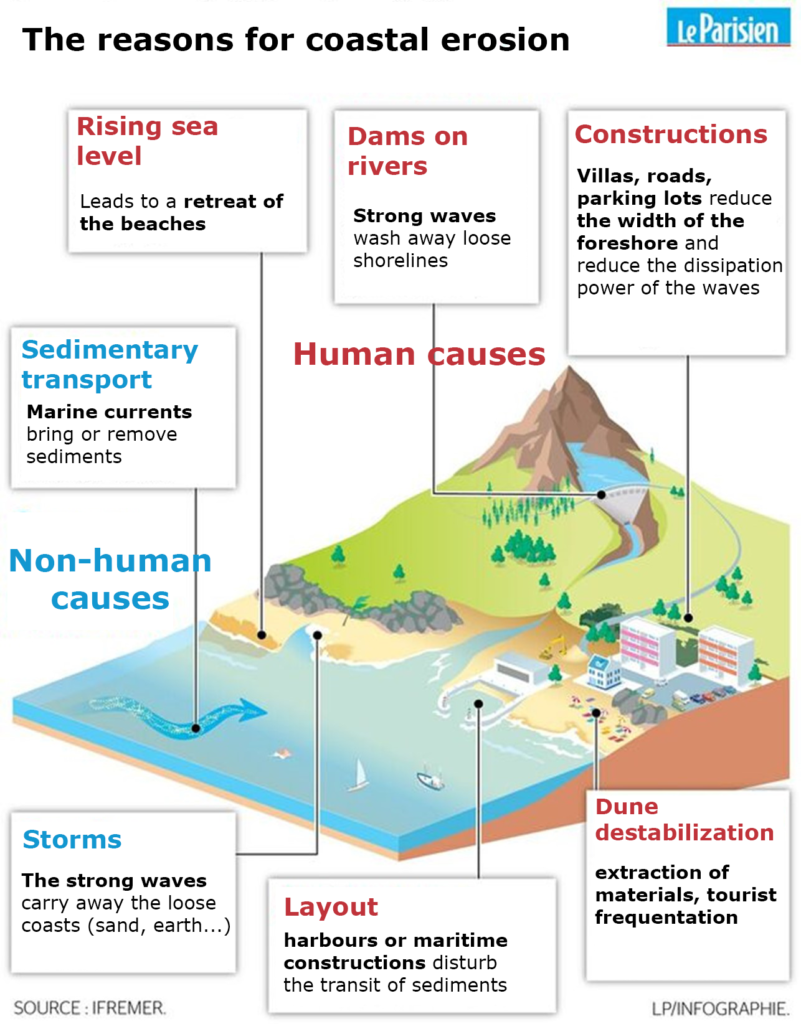
Coastal erosion
Coastal erosion
Coastal erosion (beach erosion) is a natural phenomenon. It results from the combined action of waves, wind, marine currents and the fixing flora of sand and mud. However, this erosion can be accelerated by human causes such as dams on rivers, constructions (houses, harbors, etc.) or intensive cleaning of beaches.
The natural profile of the beach is made up of native sand which constitutes a self-defense mechanism against this erosion. Its alteration compromises the stability of the coast and causes the recession of the coastline.
Excessive compaction of sand, due mainly to the passage of vehicles for beach cleaning operations, contributes to coastal erosion by fragmenting the sand grains. The weight of the tractor alters the natural profile of the beach, leaving a “leveled” and compacted surface, different from the natural state.
When sand is crushed, storm waves and wind make it easier for the sand to blow away, and waves penetrate the sand layers more easily, furthering erosion.
Flora also plays an important role in erosion control. The majority of plants on the beach can only grow along the dunes because of their strong and long roots, which anchor them to the ground.
These plants mitigate the force of the wind, fix the soil and thus oppose the phenomenon of coastal erosion. Traditional cleaning machines usually crush the essential plants and thus promote erosion.




